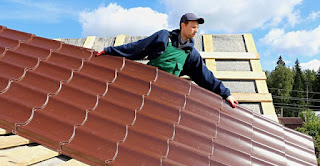Unclogging Your Drains: Common Causes and Prevention Tips for Homeowners
When it comes to household maintenance, unclogging drains
is one task that every homeowner has to deal with at some point. It can be a
frustrating and time-consuming task, but with some basic knowledge and
preventive measures, you can save yourself from the headache of a clogged drain. In this article, we'll go over common causes of clogged drains and
provide tips for preventing clogs in the first place.
Causes of clogged
drains:
- Hair: Hair is one of
the most common causes of clogged drains in the bathroom. As you shower or
brush your hair, strands can easily get stuck in the drain, leading to build
up over time.
- Grease and
Food: In the kitchen, grease and food particles are the main culprits
behind clogged drains. Pouring oil or grease down the sink can cause it to
solidify in the pipes and trap other food particles, leading to blockages.
- Foreign
Objects: Sometimes, things that shouldn't be flushed down the toilet or
drained in the sink end up there anyway. Items like cotton swabs, dental
floss, and even small toys can cause blockages in the pipes.
- Soap Scum: Soap scum can
build up in the drain over time, trapping other debris and causing a
blockage.
Preventive Measures for
Unclogging Drains:
- Use a Drain
Cover: Using a drain cover is an easy way to prevent hair and other debris
from going down the drain. Simply place the cover over the drain and empty
it out after each use.
- Dispose of
Grease Properly: Instead of pouring grease down the sink, dispose of it in a
separate container and throw it away with the regular trash.
- Use a Strainer
in the Kitchen Sink: Similar to a drain cover in the
bathroom, a strainer in the kitchen sink can catch food particles and
prevent them from going down the drain.
- Avoid Flushing
Foreign Objects: Make sure to only flush toilet paper and human waste down the
toilet. Other items should be disposed of in the trash.
- Run Hot Water: Running hot
water down the drain after each use can help prevent buildup and keep the
pipes clear.
Unclogging Drains:
- Plunge the
Drain: A plunger can be an effective tool for unclogging drains. Make sure
there is enough water in the sink or toilet to cover the plunger, then
plunge up and down rapidly to create suction.
- Use a Drain
Snake: A drain snake, also known as a plumbing auger, is a long, flexible
tool that can be used to dislodge blockages in the pipes. Insert the snake
into the drain and twist it to catch any debris.
- Try a Natural
Solution: There are a variety of natural solutions that can be used to unclog
drains. Pouring baking soda and vinegar down the drain, for example, can
create a chemical reaction that helps break up debris.
- Call a
Professional: If all else fails, it may be time to call in a professional. A
plumber can use specialised tools to remove blockages and get your drains
flowing freely once again.
Conclusion
In conclusion, clogged drains are a common household problem that can be prevented with some basic knowledge and preventive measures. By following the tips outlined in this article, you can avoid the headache of a clogged drain and keep your pipes running smoothly. And in the event that you do experience a clog, there are several methods you can try to unclog the drain yourself before calling in a professional.




Comments
Post a Comment